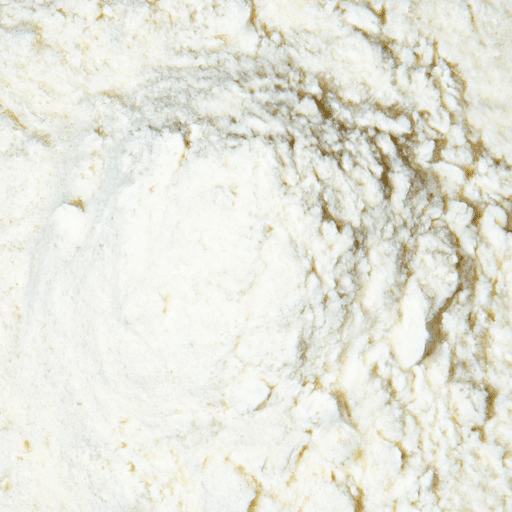The Versatile Cake Flour Blend: Elevating Your Baking Creations
When it comes to baking, the right flour makes all the difference. Each type of flour carries its own distinct properties, and today, we’re focusing on one that has a special place in the hearts of bakers: the cake flour blend. This fine-textured and low-protein flour is renowned for its ability to produce light, tender, and fluffy cakes. Let’s dive into the delicious world of cake flour blend and discover why it is a must-have in your pantry.
The Essence of Cake Flour Blend
Cake flour blend is a finely milled combination of soft wheat flours, low in gluten-forming proteins. Its smooth and velvety texture is a result of the wheat being finely ground and stripped of its bran and germ. This process creates a flour that is lighter, lower in protein, and with a finer texture when compared to all-purpose flour.
Taste and Common Uses
Cake flour blend not only enhances the texture of your baked treats but also offers a delicate and slightly sweet flavor. Its subtle taste allows other ingredients, such as vanilla or cocoa, to shine and take center stage. From classic layer cakes to tender cupcakes, cake flour blend is ideal for achieving a soft and moist crumb.
Besides cakes, this flour blend is also well-suited for making cookies, quick breads, muffins, and even certain pastries. So, whether you’re planning a birthday party or a cozy afternoon tea, cake flour blend is there to effortlessly elevate your baking creations, providing a light and airy texture that will leave your guests craving for more.
Nutritional Value
Although cake flour blend is not inherently known for its nutritional value, it still carries some perks. With its reduced protein content, it may be gentler on digestion for those who are sensitive to gluten. Additionally, as a white flour, it is often enriched with essential nutrients like iron, niacin, and folic acid.
However, it is important to note that cake flour blend is typically not a direct substitute for whole wheat or whole grain flours. If you aim to incorporate more fiber and nutrients into your baking, consider blending cake flour with other flours to achieve your desired balance between texture and nutrition.
A Brief History and Interesting Facts
The concept of cake flour blend emerged in the early 20th century as a way to create cakes with a lighter texture. In the past, bakers would sift all-purpose flour to remove some of its protein, mimicking the properties of today’s cake flour blend. Eventually, flour manufacturers recognized the demand for a specialized blend, leading to commercially produced cake flour.
Cake flour blend is typically bleached, and this process not only gives it a bright white appearance but also alters its protein structure, resulting in a more delicate and tender baked goods. However, unbleached versions of cake flour blend are also available, offering a slightly denser final product.
Cake flour blend is a kitchen staple for bakers who aspire to create ethereal cakes and delicate treats. Its fine texture, low protein content, and slightly sweet flavor help achieve baked goods that are soft, tender, and incredibly indulgent. Whether you’re an experienced baker or a novice in the kitchen, unleash your creativity with this versatile flour blend, and prepare to impress your taste buds and those of your loved ones.
Cake Flour Blend
- Origin: Cake flour blend is a type of flour that has been specifically formulated for making cakes. The exact origin of cake flour blend is unclear, but it is believed to have been developed in the United States during the early 20th century. Its creation was a response to the need for a flour with a lower protein content, which helps produce softer and more tender cakes.
- Common Uses: Cake flour blend is primarily used in baking cakes and other delicate baked goods. Its low protein content, typically around 7-9%, results in a finer texture and a lighter crumb in cakes. It is often preferred over all-purpose flour for recipes that require a delicate and tender texture, such as sponge cakes, chiffon cakes, and angel food cakes.
- Nutritional Benefits: From a nutritional standpoint, cake flour blend is similar to other types of refined flour. It is low in fat and cholesterol-free, but it is also low in fiber and lacks certain nutrients found in whole grain flours. In terms of calories, it generally contains around 100-110 calories per ¼ cup serving.
- Unique Properties: The main unique property of cake flour blend is its lower protein content compared to all-purpose flour. The low protein content helps minimize gluten development, resulting in a softer and more tender texture in cakes. It also has a finer consistency, which aids in creating a smoother batter and a lighter final product.
- Historical Significance: Cake flour blend played a crucial role in the development of modern cake baking. Its creation was driven by the desire to produce lighter, spongier, and more delicate cakes. By developing a flour specifically tailored for cakes, bakers were able to achieve these characteristics more consistently. Today, cake flour blend remains a staple ingredient in many cake recipes and continues to be sought after for its ability to yield soft and tender cakes.




Use the share button below if you liked it.
It makes me smile, when I see it.